
Increase Sales in SaaS Business: Strategies for Sustained Growth
In the ever-evolving landscape of Software as a Service (SaaS) businesses, the quest to increase sales is a pivotal goal for sustainable growth and competitiveness. With the digital marketplace becoming increasingly crowded, mastering strategies to boost sales in the SaaS realm has never been more critical. This comprehensive guide delves into the intricacies of driving sales in the SaaS business landscape, exploring innovative tactics, proven methodologies, and strategic approaches to amplify revenue streams and expand market presence. Whether you’re navigating the challenges of customer acquisition or seeking to maximize the value of existing clientele, this guide will equip you with actionable insights to elevate your SaaS business and achieve significant increases in sales performance.
How is Sales Connected to SaaS?
Sales and SaaS are intrinsically linked, forming the backbone of success for any SaaS business. SaaS companies operate on a subscription-based model, unlike traditional software models that often rely on one-time purchases or perpetual licenses for revenue. This fundamental difference underscores the importance of sales efforts beyond just closing a single transaction. In the realm of SaaS, sales activities are centered around nurturing long-term customer relationships and maximizing the customer lifetime value (LTV). Rather than focusing solely on initial transactions, SaaS sales teams must continuously engage with customers, providing ongoing value and support to ensure satisfaction and retention. This customer-centric approach drives revenue and fosters loyalty and advocacy, ultimately fueling the sustained growth and success of the SaaS business.
Effective sales strategies in the SaaS context involve:
Customer Acquisition:
SaaS companies must prioritize attracting and converting new customers through targeted marketing, lead generation, and streamlined sales processes. This involves understanding potential customers’ pain points and needs and effectively communicating how the SaaS solution can address those challenges. By leveraging inbound marketing tactics, such as content marketing and SEO, and outbound strategies, like email campaigns and social media advertising, SaaS companies can attract qualified leads and guide them through the sales funnel to conversion.
Customer Retention:
In the competitive landscape of SaaS, customer retention is paramount. SaaS companies must prioritize ensuring high customer satisfaction and minimizing churn by providing exceptional service, support, continuous product improvements, and customer satisfaction surveys. This involves proactive engagement with customers, timely resolution of issues, and regular communication to gather feedback and address concerns. SaaS companies can foster loyalty and increase retention rates by delivering value beyond the initial sale and cultivating strong customer relationships.
Upselling and Cross-selling:
Maximizing customer lifetime value is another critical aspect of SaaS sales strategies. SaaS companies should actively identify opportunities to upsell additional features, upgrades, or complementary products to existing customers. By understanding their evolving needs and usage patterns, SaaS companies can tailor personalized offers and recommendations that add value and enhance the customer experience. This increases revenue and strengthens customer relationships and loyalty over time.
What are Sales Regarding SaaS Business?
In the context of a SaaS business, sales encompass various activities and processes focused on acquiring, retaining, and expanding customer relationships. Here are some key aspects of sales in the SaaS world:
Lead Generation:
We identify and attract potential customers through various marketing channels, such as content marketing, social media, paid advertising, and referrals.
Nurturing and Qualification:
Engage with leads, address their pain points, and qualify them based on their fit and readiness to purchase your SaaS solution.
Sales Demos and Pitches:
Effectively demonstrate your SaaS product’s value proposition and address customer objections through personalized sales presentations and demos.
Contract Negotiations and Closing:
Navigating the sales process, negotiating terms, and closing deals with qualified prospects.
Onboarding and Customer Success:
EWe ensure a smooth onboarding experience for new customers and provide ongoing support, training, and resources to maximize customer satisfaction and retention.
Expansion and Renewals:
They identify opportunities for upselling, cross-selling, and renewing contracts with existing customers, increasing their lifetime value and revenue contribution.
By understanding and optimizing these sales activities, SaaS businesses can streamline their processes, improve conversion rates, and drive sustainable revenue growth.
Creating a Systematic Approach to Growth for Your SaaS Business
Adopting a systematic and structured approach is essential to achieve consistent sales growth in your SaaS business. Here are the key steps to consider:
Define Your Target Market:
Identify your ideal customer personas, their pain points, and the value your SaaS solution provides. This will help you tailor your sales and marketing efforts effectively.
Develop a Sales Process:
Establish a well-defined sales process that outlines the steps from lead generation to closing deals, including qualification criteria, sales stages, and handoff points between teams.
Implement Sales Enablement:
Equip your sales team with the tools, resources, and training to effectively communicate your value proposition, overcome objections, and close deals.
Leverage Data and Analytics:
Utilize data and analytics to track key performance indicators (KPIs), identify bottlenecks, and continuously optimize your sales processes for better results.
Foster Alignment:
Ensure alignment between your sales, marketing, product, and customer success teams to deliver a cohesive and seamless customer experience throughout the buyer’s journey.
Embrace Continuous Improvement:
Review and refine your sales strategies regularly based on market trends, customer feedback, and performance data. Encourage a culture of continuous learning and adaptation.
By following a systematic approach, you can streamline your sales efforts, maximize efficiency, and drive sustainable growth for your SaaS business.
Strategies for Increasing Sales in a SaaS Company
Some proven strategies that SaaS companies can implement to increase sales and drive growth:
Inbound Marketing and Content Strategy:
Inbound marketing focuses on attracting potential customers by creating valuable content that addresses their pain points and interests. A comprehensive content strategy involves creating blog posts, whitepapers, webinars, and social media engagement. By providing valuable content, SaaS companies can establish themselves as thought leaders in their industry and attract qualified leads who are already interested in their solutions.
Product-Led Growth (PLG):
PLG is a growth strategy that centers around the product as the primary driver of acquisition, conversion, and expansion. By offering features like free trials, freemium models, and in-app messaging, SaaS companies can allow users to experience the value of their product firsthand, leading to higher conversion rates and increased customer retention.
Sales Automation and CRM Integration:
Sales automation tools and CRM systems help streamline sales processes, improve data management, automatically fill in your CRM with conversational intelligence, and increase sales team productivity. By automating repetitive tasks and integrating customer data across platforms, SaaS companies can better track leads, nurture relationships, and identify opportunities for upselling or cross-selling.
Personalized Sales Experiences:
Personalization is key to effective sales. SaaS companies should tailor their sales approach and messaging to meet individual customers’ unique needs, preferences, and pain points. By leveraging data and insights, sales teams can deliver personalized and relevant experiences that resonate with prospects and drive conversions.
Strategic Partnerships and Integrations:
Collaborating with complementary businesses or industry leaders can expand a SaaS company’s reach and customer base. By forming strategic partnerships and integrations, SaaS companies can tap into new markets, leverage existing networks, and provide added value to customers through complementary offerings.
Customer Success and Retention Initiatives:
Customer success programs focus on maximizing customer satisfaction, retention, and expansion revenue. By investing in proactive support, ongoing education, and customer engagement initiatives, SaaS companies can ensure that customers derive maximum value from their solutions and remain loyal over the long term.
Sales Enablement and Training:
Continuous training and upskilling are essential for sales teams to communicate a SaaS product’s value proposition effectively. By providing relevant resources, training materials, and best practices, SaaS companies can empower their sales teams to engage with prospects confidently and drive sales success.
Referral and Affiliate Programs:
Referral and affiliate programs incentivize existing customers and partners to promote a SaaS offering and drive new customer acquisition. By offering rewards or discounts for successful referrals, SaaS companies can tap into the power of word-of-mouth marketing and expand their customer base through trusted recommendations.
Important SaaS Metrics to Increase Sales
To effectively measure and optimize your sales efforts, it’s crucial to track and analyze the following key SaaS metrics:
Customer Acquisition Cost (CAC):
CAC refers to the total money a company spends on acquiring a new customer. This includes expenses related to marketing campaigns, sales efforts, and other resources utilized to attract and convert prospects into paying customers. Calculating CAC involves dividing the total acquisition costs by the number of customers acquired within a specific period. For example, if a SaaS company spends $10,000 on marketing and sales efforts monthly and acquires 100 new customers, the CAC would be $100 per customer.
Customer Lifetime Value (LTV):
LTV is the projected revenue customers expect to generate throughout their relationship with your SaaS business. Understanding LTV helps determine the long-term value of acquiring a new customer and allows for better decision-making regarding customer acquisition strategies and resource allocation. For instance, if the average monthly revenue per customer is $50, and the average customer retention period is 24 months, the LTV would be $1,200 ($50 * 24).
Monthly Recurring Revenue (MRR):
MRR represents the predictable, recurring revenue generated from active subscriptions every month. This metric provides insight into the health of a SaaS business’s subscription-based revenue stream and allows for better forecasting and planning. For example, if a SaaS company has 100 customers paying $50 monthly for their subscription, the MRR would be $5,000.
Churn Rate:
The churn rate refers to the percentage of customers who cancel or fail to renew their subscriptions within a period. High churn rates can indicate issues with product-market fit, customer satisfaction, or the effectiveness of retention strategies. For instance, if a SaaS company loses 10 out of 100 customers monthly, the churn rate would be 10%.
Lead Conversion Rate:
Lead conversion rate measures the percentage of leads successfully converting into paying customers. This metric helps evaluate the effectiveness of sales and marketing efforts in converting prospects into revenue-generating customers. For example, if a SaaS company generates 500 leads monthly and converts 50 into paying customers, the lead conversion rate would be 10%.
Sales Cycle Length:
Sales cycle length refers to the average time it takes to convert a lead from initial contact to a closed deal. Understanding this metric helps optimize sales processes, identify bottlenecks, and improve efficiency. For example, if the average sales cycle length is 30 days, it indicates that it takes approximately one month to convert a lead into a customer.
Expansion Revenue:
Expansion revenue encompasses the additional revenue generated from existing customers through upsells, cross-sells, or upgrades. This metric highlights the opportunities for revenue growth within the existing customer base and underscores the importance of customer retention and satisfaction. For example, if a SaaS company offers add-on features or premium packages to existing customers and generates $2,000 additional monthly revenue, the expansion revenue would be $2,000.Top Tools for Measuring Sales Ration
Salesforce:
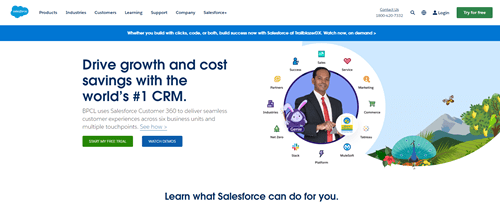
As a pioneer in CRM software, Salesforce provides a comprehensive platform for managing customer relationships and driving sales growth. Its robust features include lead management, opportunity tracking, and sales forecasting. Salesforce allows businesses to customize their sales processes and workflows to suit their unique needs. With advanced analytics and reporting capabilities, businesses can gain valuable insights into their sales performance and make data-driven decisions to optimize their strategies.
HubSpot:

HubSpot offers an all-in-one solution for inbound marketing, sales, and customer service. Its CRM tool lets businesses organize and track contacts, deals, and tasks in a centralized dashboard. HubSpot’s sales tracking features help teams prioritize leads, automate outreach, and nurture prospects through personalized communication. With built-in reporting and analytics, businesses can measure key sales metrics, such as conversion rates and revenue growth, and identify areas for improvement.
Zoho CRM:
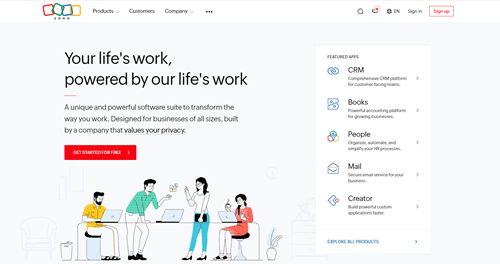
Zoho CRM is known for its user-friendly interface and extensive feature set. It provides tools for lead management, contact management, and pipeline visualization. Zoho CRM offers customizable dashboards and reports to track sales performance metrics, such as win rates, sales cycle length, and deal value. With automation features and AI-powered insights, businesses can streamline their sales processes and focus on closing more deals.
InsightSquared:
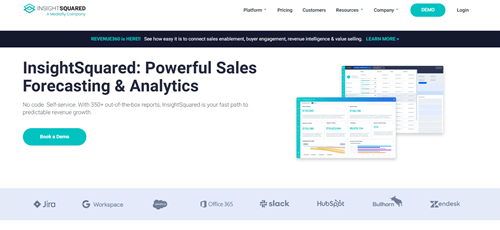
InsightSquared specializes in sales analytics and business intelligence for SaaS companies. It integrates with leading CRM platforms like Salesforce to provide deep insights into sales performance metrics. InsightSquared offers pre-built dashboards and reports for analyzing key metrics, such as pipeline velocity, quota attainment, and customer lifetime value. Its predictive analytics capabilities help businesses forecast future sales trends and identify growth opportunities.
Domo:
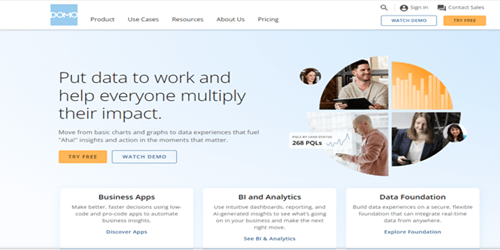
Domo’s cloud-based business intelligence platform enables businesses to consolidate sales data from various sources and visualize it in real time. With interactive dashboards and advanced analytics capabilities, Domo helps businesses uncover hidden insights and identify growth opportunities. Its predictive analytics features allow businesses to forecast sales trends and anticipate customer needs, enabling proactive decision-making and strategic planning. Domo’s collaborative tools facilitate communication and alignment across sales teams, driving efficiency and productivity.
Tableau:
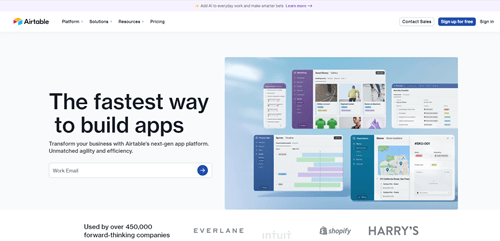
Tableau empowers businesses to create compelling visualizations and interactive dashboards to analyze sales performance effectively. By connecting to CRM systems and other data sources, Tableau enables businesses to gain actionable insights into their sales pipeline, customer behavior, and revenue trends. Its drag-and-drop interface and robust analytics tools make it easy for sales teams to explore data and uncover insights that drive business success. With Tableau, businesses can track KPIs, identify patterns, and make data-driven decisions to optimize their sales strategies.
Looker:
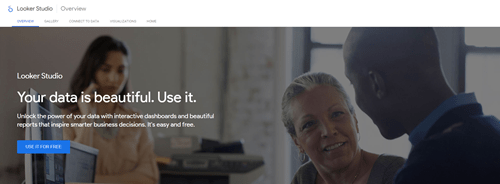
Looker’s data analytics platform empowers businesses to unlock the value of their sales data through real-time exploration and analysis. With customizable dashboards and advanced reporting capabilities, Looker enables businesses to gain deep insights into their sales performance metrics and identify areas for improvement. Its predictive analytics features help businesses anticipate customer needs and optimize sales strategies accordingly. Looker’s collaboration tools facilitate knowledge sharing and alignment across sales teams, driving efficiency and business growth.
Microsoft Dynamics 365:
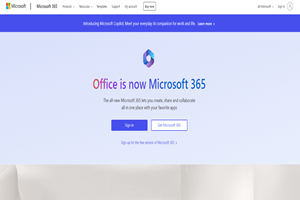
Microsoft Dynamics 365 offers a comprehensive suite of CRM and ERP applications designed to streamline sales processes and enhance customer engagement. With sales automation tools, pipeline management, and forecasting capabilities, Dynamics 365 enables businesses to drive revenue growth and improve sales efficiency. Its seamless integration with other Microsoft products, such as Office 365 and Power BI, ensures data consistency and enables businesses to leverage the full power of their sales data.
Pipedrive:
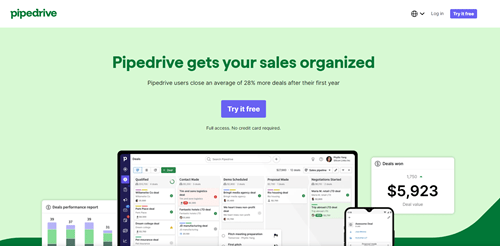
Pipedrive’s user-friendly CRM platform is designed to help sales teams manage their pipelines, track deals, and close more deals. Its intuitive interface and customizable workflows make it easy for sales reps to prioritize tasks and focus on high-value opportunities. Pipedrive’s sales forecasting and reporting features provide valuable insights into sales performance, enabling businesses to make informed decisions and drive revenue growth. With built-in collaboration tools and integrations with other sales and marketing tools, Pipedrive empowers businesses to streamline their sales processes and achieve better results.
Google Analytics:
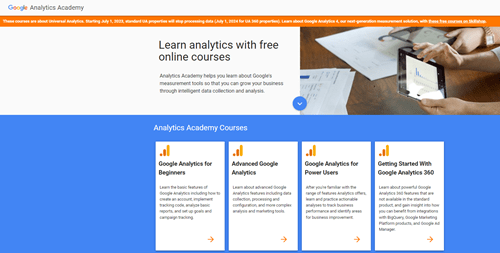
While primarily known for website analytics, Google Analytics can be a valuable tool for measuring sales campaigns’ effectiveness and optimizing the sales funnel. By tracking website traffic, user behavior, and conversion rates, businesses can gain insights into customer preferences and identify opportunities to improve sales performance. Google Analytics integration with other sales and marketing tools allows businesses to comprehensively view the customer journey and make data-driven decisions to drive revenue growth.
FAQs
How do I determine the right pricing strategy for my SaaS product?
Determining the optimal pricing strategy involves considering factors like your target market, competitive landscape, perceived value, and customer acquisition costs. Common pricing models include flat-rate pricing, tiered pricing, usage-based pricing, and freemium models. Continuously testing and optimizing your pricing strategy is crucial.
What are some effective ways to nurture and qualify leads?
Effective lead nurturing tactics include targeted email campaigns, content marketing, webinars, and personalized outreach. Use lead scoring and qualification criteria to prioritize high-value leads and ensure your sales team focuses on the most promising opportunities.
How can I improve customer retention and reduce churn?
Improving customer retention and reducing churn can involve implementing proactive customer success programs, providing exceptional support and customer education, continuously improving your product based on user feedback, and offering incentives or discounts for long-term customers. Regularly monitoring and addressing churn drivers is also essential.
What are some effective ways to leverage strategic partnerships for growth?
Strategic partnerships include co-marketing initiatives, product integrations, affiliate programs, or bundling your SaaS offering with complementary products or services. Identifying and collaborating with partners with access to your target audience or offering synergistic solutions can benefit growth.
How do I measure the success of my SaaS sales strategies?
Key metrics to measure the success of your SaaS sales strategies include lead conversion rates, customer acquisition cost (CAC), customer lifetime value (LTV), monthly recurring revenue (MRR), churn rate, sales cycle length, and expansion revenue. Regularly tracking and analyzing these metrics can help you optimize and refine your sales approaches for better results.
How can I ensure my SaaS sales efforts align with my business objectives?
To ensure alignment, clearly define your overarching business objectives, such as revenue targets, market share goals, profitability milestones, or exit strategies. Then, develop your SaaS sales strategies with those objectives, ensuring that each tactic and initiative directly contributes to achieving your desired outcomes. Regularly review and adjust your sales efforts to maintain alignment with your evolving business goals.
Conclusion
Increasing sales in a SaaS business is a multifaceted endeavor that requires a systematic approach, strategic planning, and continuous optimization. By understanding the unique dynamics of the SaaS model, developing a comprehensive sales process, and implementing proven strategies such as inbound marketing, product-led growth, sales automation, and customer success initiatives, you can drive sustainable growth and maximize customer lifetime value. Remember, success in the SaaS world is not just about closing one-time deals but nurturing long-term customer relationships and delivering exceptional value throughout the customer journey. Regularly monitor key SaaS metrics, gather customer feedback, and adapt your sales strategies to stay ahead of the curve and outpace the competition.




